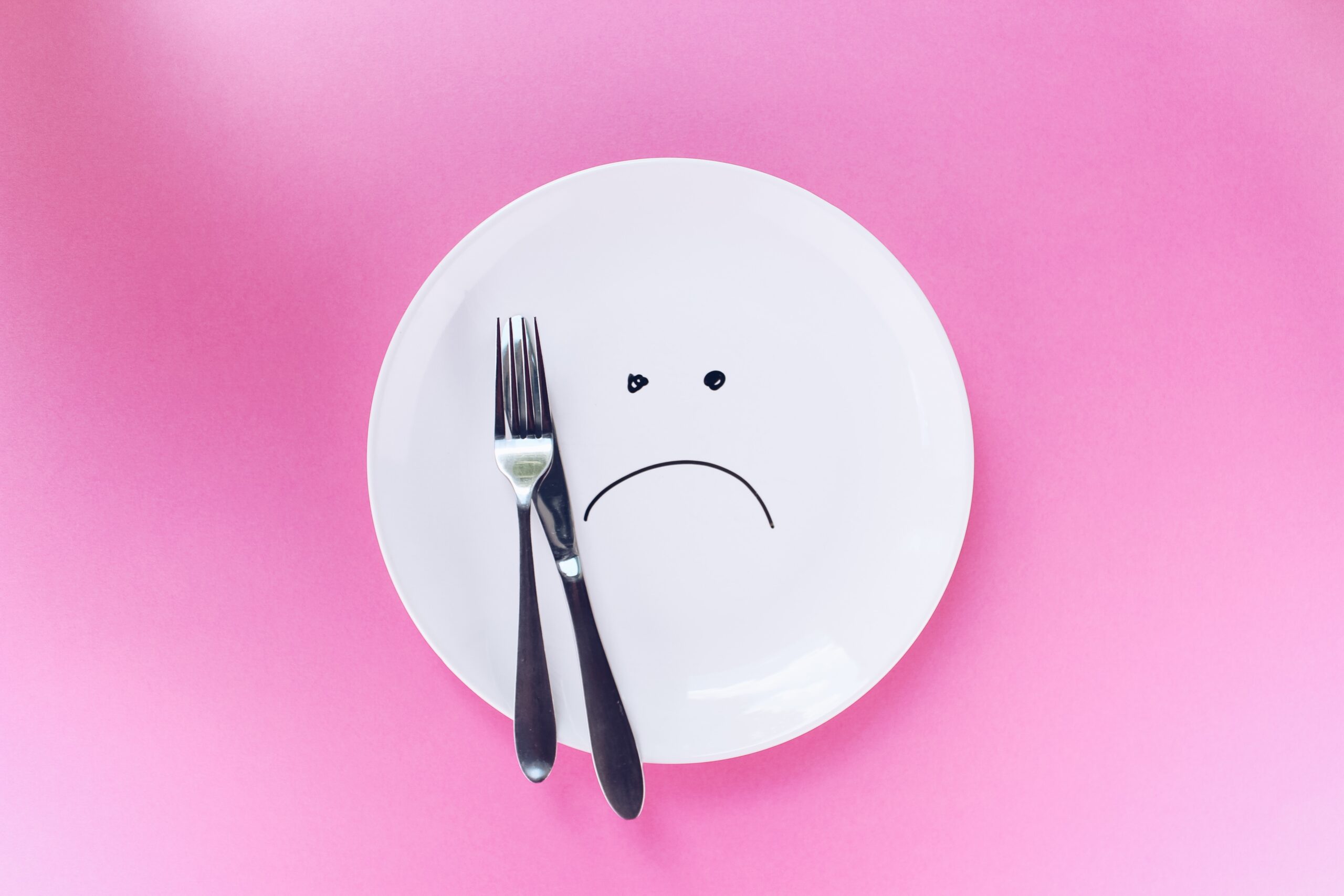Picture this: you’re sitting at your desk, trying to resist the temptation of that candy bar sitting in your drawer. The struggle to overcome your cravings for sugary foods is real, and it can feel like an endless battle. But what if there was a solution? Enter the keto diet. Not only is it gaining popularity for its weight loss benefits, but there’s also buzz around its ability to reduce cravings for sugary foods. In this article, we’ll explore whether the keto diet is the secret weapon you’ve been searching for in your quest for a sugar-free life.

Understanding the Keto Diet
The basic principles of the keto diet
The keto diet, short for the ketogenic diet, is a low-carb, high-fat diet that has gained popularity in recent years. The basic principle of the keto diet is to drastically reduce carbohydrate intake and replace it with fats. By doing so, your body enters a state known as ketosis, where it starts using fat as its primary source of energy instead of carbohydrates. This metabolic shift has numerous potential benefits, one of which includes reduced cravings for sugary foods.
Origins and historical use of the diet
The keto diet was initially developed in the 1920s as a therapeutic tool to treat epilepsy, particularly in children. The diet gained popularity as a treatment option, and its effectiveness in reducing seizures was observed. Over time, the keto diet started being used for other purposes, such as weight loss and improving overall health.
Different types of keto diets
While the main principle of the keto diet remains the same, there are different variations that people can follow. The Standard Ketogenic Diet (SKD) is the most common one, where individuals consume a low-carb, moderate-protein, and high-fat diet. Another variation is the Cyclical Ketogenic Diet (CKD), where individuals follow a pattern of high-carb days followed by low-carb days. The targeted ketogenic diet (TKD) allows individuals to consume a small amount of carbohydrates around their workouts. Lastly, the high-protein ketogenic diet (HPKD) emphasizes higher protein intake compared to the SKD.
How Our Body Processes Sugars
Understanding glucose and insulin
Glucose is the primary source of energy for our bodies, and it comes from the carbohydrates we consume. When we eat carbohydrates, our body breaks them down into glucose, which is then transported through the bloodstream. Insulin, a hormone produced by the pancreas, helps regulate the amount of glucose in our blood by facilitating its uptake into cells.
Health risks associated with excessive sugar consumption
Excessive sugar consumption can have detrimental effects on our health. It can contribute to weight gain, increase the risk of developing conditions such as type 2 diabetes, cardiovascular disease, and obesity. Additionally, a high intake of sugar can lead to chronic inflammation in the body, which is linked to various health problems.
The brain’s role in sugar addiction
Sugar addiction is a phenomenon in which individuals have a strong craving for sugary foods and find it challenging to control their consumption. Research suggests that sugar activates reward centers in the brain, leading to the release of dopamine, a neurotransmitter associated with pleasure and reward. Over time, this can lead to dependence and cravings.
Effects of Sugar on Cravings
How sugar triggers the reward system in the brain
When we consume sugar, it stimulates the release of dopamine in our brain’s reward system. This activation creates a pleasurable sensation, reinforcing the desire for more sugar. As a result, the brain associates the consumption of sugar with pleasure, leading to cravings and a potential addiction-like response.
Hidden sugars in our everyday diet
Sugar can be found in various forms and is often hidden in many processed foods and beverages. It can appear under different names such as sucrose, high fructose corn syrup, glucose, and dextrose. Being aware of these hidden sugars is essential in managing sugar intake and reducing cravings.
Understanding sugar withdrawal symptoms
When individuals reduce their sugar intake, they may experience withdrawal symptoms similar to those observed with substance addiction. These symptoms can include cravings, irritability, headaches, and fatigue. It is important to recognize these symptoms as temporary and understand that they will subside as the body adjusts to a lower sugar intake.
Keto Diet and Blood Sugar Regulation
Effects of keto diet on insulin levels
One of the notable effects of the keto diet is its impact on insulin levels. By minimizing carbohydrate intake, the body’s insulin response is significantly reduced. This reduction helps regulate blood sugar levels and avoids spikes and crashes associated with high-carbohydrate diets. Stable blood sugar levels can contribute to reduced cravings for sugary foods.
Keto diet and low blood sugar
Low blood sugar, also known as hypoglycemia, can occur when individuals consume excess amounts of carbohydrates, leading to a rapid rise in blood sugar followed by a quick drop. By following a keto diet, which restricts carbohydrate intake, the risk of experiencing low blood sugar episodes is minimized.
Keto diet as a tool against diabetes
The keto diet has shown promising results in managing and even reversing type 2 diabetes. By minimizing carbohydrate intake, individuals can stabilize blood sugar levels, improve insulin sensitivity, and reduce the need for external insulin administration. However, it is crucial for individuals with diabetes to consult their healthcare provider before making any dietary changes.

Transitioning into Ketosis
The stages of transitioning into ketosis
Transitioning into ketosis can be a challenging process for some individuals, as the body adapts to utilizing fats as the primary fuel source. The initial stages involve depleting glycogen stores in the liver and muscles, which can result in feelings of fatigue and low energy. As the body adjusts, it starts producing ketones, which are molecules produced when fat is broken down. The production of ketones indicates that the body has successfully entered ketosis.
Keto flu: symptoms and how to manage them
During the early stages of transitioning into ketosis, some individuals may experience flu-like symptoms, commonly known as “keto flu.” These symptoms can include fatigue, brain fog, headaches, nausea, and irritability. Staying hydrated, ensuring adequate electrolyte intake, and gradually reducing carbohydrate intake can help alleviate these symptoms.
How to tell if you are in ketosis
There are several ways to determine if you are in ketosis. One common method is using ketone urine test strips, which detect the presence of ketones in the urine. Blood ketone meters provide a more accurate measurement of ketone levels. Additionally, some individuals may notice a different taste in their breath or experience a decreased appetite as signs of being in ketosis.
Keto Diet and Reduced Cravings
Scientific studies on keto diet and appetite control
Several scientific studies have explored the relationship between the keto diet and appetite control. Research suggests that the consumption of a high-fat, low-carbohydrate diet can lead to increased feelings of fullness and reduced hunger compared to high-carb diets. This effect can contribute to decreased cravings for sugary foods.
Role of ketones in reducing cravings
Ketones, which are produced during ketosis, have been found to have an appetite-suppressing effect. They can act on the brain to regulate hunger hormones and reduce the desire for food, including sugary foods. This mechanism may contribute to the reduced cravings observed in individuals following a keto diet.
How fats & proteins offer sustained satiety vs sugars
Fats and proteins offer longer-lasting satiety compared to carbohydrates, which can help reduce cravings. When consumed, fats and proteins take longer to digest, providing a steady release of energy and keeping individuals fuller for longer periods. In contrast, consuming sugary foods can lead to rapid spikes and crashes in blood sugar levels, resulting in increased hunger and cravings.
Personal Testimonies on Keto Diet and Sugar Cravings
How individuals report change in sugar cravings following keto
Many individuals who have adopted the keto diet report a significant reduction in sugar cravings. They often express feeling more in control of their food choices and no longer feeling the constant need for sugary snacks. These personal testimonies highlight the potential effectiveness of the keto diet in curbing sugar cravings.
Challenges faced in the process
Transitioning to a keto diet and reducing sugar intake can present challenges. Initially, individuals may experience cravings and withdrawal symptoms, which can make it difficult to adhere to the diet. Additionally, social situations and the availability of sugary foods can pose challenges for individuals trying to eliminate sugars from their diet.
Ways to manage and overcome cravings
Managing cravings while on a keto diet involves various strategies. Some individuals find it helpful to substitute sugary foods with healthier alternatives, such as berries or dark chocolate with high cocoa content. Others focus on mindful eating, finding satisfaction in nourishing meals and embracing the positive effects of the diet on their overall health. Seeking support from friends, family, or online communities can also provide encouragement and motivation during challenging moments.
Drawbacks and Criticisms of the Keto Diet
Critiques of the keto diet from a nutritional perspective
One common critique of the keto diet is that it can be challenging to obtain a sufficient intake of certain nutrients, such as fiber and certain vitamins and minerals, due to the limited variety of foods typically consumed. Additionally, the high intake of saturated fats that can accompany a keto diet may raise concerns for heart health, although recent research suggests that the impact of saturated fats on heart health may not be as significant as previously believed.
Concerns about the long term effects of the keto diet
While the short-term benefits of the keto diet have been observed in various studies, there is ongoing debate and limited long-term research regarding its effects on overall health and sustainability. Some concerns include potential negative impacts on gut health, hormonal balance, and metabolic rate. It is essential for individuals considering the keto diet to consult with healthcare professionals and carefully monitor their health over time.
Understanding the keto plateau
Individuals on a keto diet may experience a plateau, where weight loss stalls despite continued adherence to the diet. This plateau is a common occurrence and can be attributed to various factors, such as the body adapting to the new metabolic state or an excessive calorie intake. Adjustments to the diet, such as modifying macronutrient ratios or incorporating intermittent fasting, may help overcome this plateau.
Sustainable Keto Living
Tips for maintaining the keto diet long term
To maintain the keto diet long term, it is crucial to focus on variety and flexibility within the dietary restrictions. Exploring different recipes, incorporating a wide range of low-carb vegetables, and being creative with healthy fats and proteins can help prevent monotony and ensure nutritional adequacy. Staying informed about the latest research and connecting with a supportive community can provide valuable resources and motivation.
Creating a balanced and sustainable keto lifestyle
While the keto diet offers potential benefits, it is important to create a balanced and sustainable lifestyle that extends beyond just the diet. Engaging in regular physical activity, managing stress levels, getting enough sleep, and prioritizing overall well-being are essential components of a healthy and sustainable lifestyle. Combining the principles of the keto diet with these lifestyle factors can optimize the reduction of cravings for sugary foods.
Conclusion
Summarizing the impact of the keto diet on sugar cravings
The keto diet has shown promise in reducing cravings for sugary foods. By transitioning the body into a state of ketosis, the keto diet allows individuals to break free from the cycle of sugar addiction and experience reduced cravings. The effects of ketogenic eating on blood sugar regulation, ketone production, and appetite control contribute to curbing sugar cravings and supporting overall health.
Future research possibilities
While existing research highlights the potential benefits of the keto diet in reducing cravings for sugary foods, further studies are needed to explore its long-term effects, optimal macronutrient ratios, and individual variations in response. Investigating the mechanisms behind the suppression of sugar cravings and examining the role of mindset and behavior change in sustaining dietary changes would also contribute to a greater understanding of the keto diet’s impact on sugar cravings.


